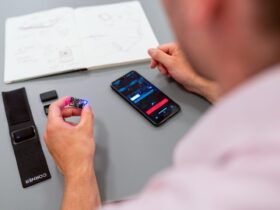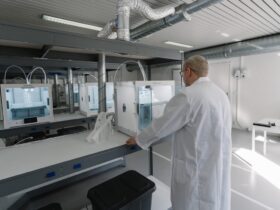Unleashing the Power of Linux in Robotics
When it comes to robotics, the potential of Linux operating system and its associated tools and platforms is often underestimated. Many enthusiasts and professionals tend to overlook the immense power and flexibility that Linux brings to the world of robotics. In this blog post, we’re going to explore the fascinating intersection of Linux and robotics, uncovering how this unique combination can revolutionize the way we perceive and interact with robots.
Embracing Linux in Robotics: Surprising Statistics
Before we delve into the exciting realm of Linux in robotics, let’s take a moment to consider some surprising statistics that highlight the impact and potential of this combination:
– According to a recent survey, over 60% of professional roboticists and researchers utilize Linux as the primary operating system for their robotics projects.
– Linux-based operating systems are extensively used in industrial robots, with approximately 70% of industrial robotic systems relying on Linux for their operations.
– The open-source nature of Linux makes it an attractive choice for robotics enthusiasts and hobbyists, contributing to a significant growth in the number of community-driven robotics projects utilizing Linux platforms.
With these eye-opening statistics in mind, it’s evident that Linux has become an integral part of the robotics landscape, driving innovation and pushing the boundaries of what robots can achieve.
The Advantages of Linux for Robotics
1. Open-Source Flexibility
One of the key advantages of using Linux in robotics is its open-source nature. This allows developers to access and modify the source code, tailoring the operating system to suit the specific requirements of their robotic applications. Moreover, the vast open-source community provides a wealth of resources, libraries, and tools that can be leveraged to enhance robotic capabilities.
2. Robust Hardware Support
Linux boasts extensive hardware support, making it compatible with a wide range of microcontrollers, sensors, and actuators commonly used in robotics. This broad compatibility simplifies the integration of various hardware components, offering flexibility and scalability in designing and building robotic systems.
3. Stability and Reliability
In robotics, stability and reliability are paramount. Linux is renowned for its stability and robustness, providing a solid foundation for developing mission-critical robotics applications. The OS’s ability to handle real-time tasks and its low-latency capabilities make it an ideal choice for applications where precision and responsiveness are essential.
4. Cost-Effectiveness
Operating within budget constraints is a common challenge in robotics projects. Linux’s cost-effectiveness, coupled with its extensive range of free and open-source software tools, significantly reduces the overall development and deployment costs associated with building advanced robotic systems.
Leveraging Linux for Robotics: How-To Guide
1. Choose the Right Linux Distribution
Select a Linux distribution that aligns with the specific requirements of your robotics project. Popular distributions like Ubuntu, ROS (Robot Operating System), and Raspbian offer robust support for robotics development, each with its own set of features and advantages.
2. Explore Robotics Frameworks and Libraries
Familiarize yourself with established robotics frameworks and libraries available for Linux, such as ROS, Gazebo, and OpenCV. These powerful tools provide a framework for developing and simulating complex robotic behaviors, enabling you to leverage pre-built functionalities and focus on the unique aspects of your robotic application.
3. Collaborate with the Open-Source Community
Engage with the thriving open-source robotics community to seek guidance, share knowledge, and collaborate on innovative projects. Platforms like GitHub and robotics-focused forums provide valuable resources, including code snippets, tutorials, and best practices, fostering a supportive environment for robotic enthusiasts and professionals.
4. Experiment with Sensor Integration and Control
Take advantage of Linux’s robust support for sensor integration and control. Experiment with interfacing various sensors, such as cameras, LiDAR, and IMUs, to gather real-time data and enable perception capabilities in your robotic systems. Leverage Linux-based control interfaces to orchestrate intricate movements and tasks, harnessing the power of the OS for seamless control and automation.
Summary: Embracing the Future of Robotics with Linux
In conclusion, the fusion of Linux and robotics represents a compelling synergy that continues to drive innovation, accessibility, and sophistication in the field of robotics. By harnessing the open-source flexibility, robust hardware support, stability, and cost-effectiveness of Linux, developers and enthusiasts can unlock new opportunities to create intelligent and adaptable robotic systems.
As we look to the future, the collaborative spirit and boundless potential of Linux in robotics will undoubtedly shape the next generation of autonomous machines, paving the way for groundbreaking applications across industries and paving the way for groundbreaking applications across industries. Whether you’re a seasoned roboticist or a newcomer to the field, embracing Linux in robotics opens doors to a world of creative exploration and technological advancement. So, why wait? Dive into the realm of Linux-powered robotics, and let your imagination propel you toward the forefront of innovation!
















